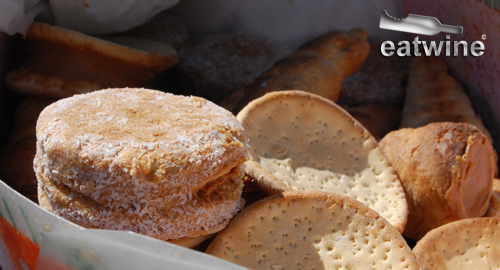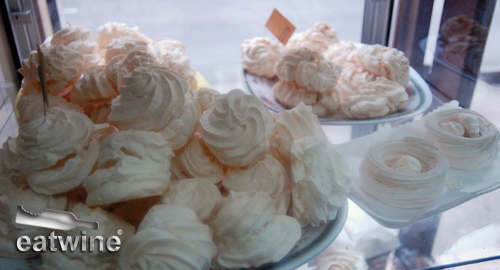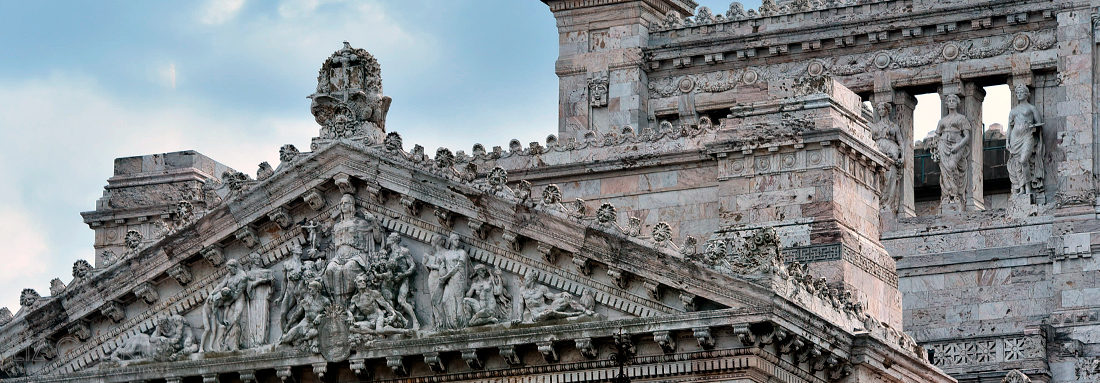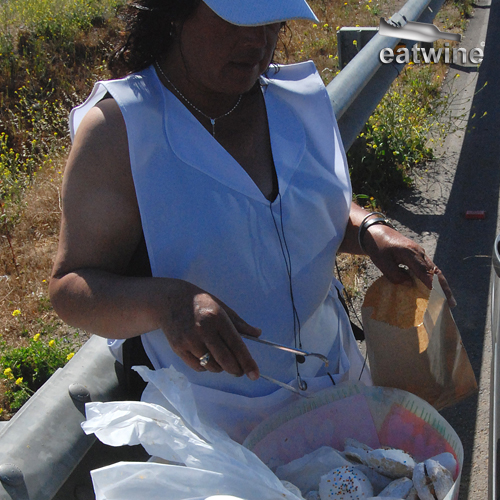Coming back from beaches of Maitencillo, Cachagua, and Zapallar on Route 5 near the provincial city of La Ligua, we always encounter ladies garbed in white shaking a white pompom and adorned by a large wooden picnic basket. My husband usually has a snack attack on the way back from the north, so we veer off to the side and the vendor comes running to the car. She opens her woven basket like a treasure chest filled with sweet, soft smells of recently baked pastries. They glisten like snow and their beautiful presentation makes you want to devour them at first sight. There are alfajores (thin wafers stuck together with milk caramel and rolled in coconut), meringues (little baked egg white puffs studded with walnuts), empolvados (spongy egg cakes made with ground almonds and powdered sugar), chilenitos (puffs of meringue topping a thin wafer with milk caramel), príncipes (half moons filled with orange cream) and mil hojas (classic puff pastry sheets held together by, you guessed it, more milk caramel). As my husband bites into these sweet puffs, his leaves out a low volume “yummmmm”, shaking his head in a sign of bliss.
Dulces chilenos are a typical sweet that can be traced back to colonial times in Chile when nuns were responsable for creating the tasty, sweet pastries. The base is always flour and egg to make a crunchy cracker which is topped with manjar (milk caramel), or huevo mol (an egg yolk-sugar paste from Ávila, Spain), and often covered in meringue and baked. There are also variations of this in the form of traditional cakes made from panqueques, thin crepes, that are “glued” together by manjar, huevo mol, jam, pastry cream tinged with almond or orange zest, lucuma paste, or a combination of them.

As Chile modernizes, these traditions are, unfortunately, becoming less common. Chileans now buy industrial cakes at supermarkets. While they may be convenient, they are desserts without a soul–nor roots. However, there still are a couple old school bakeries in Santiago that are dedicated to preserving these living culinary traditions. These food artisans make the kinds of sweets that caress your tummy and soul–the kind that make you feel warm and fuzzy when your mom made for you as a kid. It’s all about the right technique since the ingredients are only eggs, flour, butter, sugar, milk, and water. Maybe a little fruit pastes, but those are the bases. They are alchemists, and experts, in transforming ingredients with their understanding of baking and love for her craft. In homage to her contribution to this part of Chilean culture as a true food artisans. They are references for those of your wanting to try these delicacies unique to Chile. Go for it for your next birthday cake, dinner party, or tea time. These recommendations are an excerpt from our foodie guide to the capital, Eat Wine Santiago.
Dulcería Violeta
Many, many years ago when Chile was still a colony, Spanish nuns made traditional sweets. Violeta Bascuñan learned these recipes from her grandmother, and over forty years ago, she opened a bakery that specialized exclusively in colonial sweets. As the business grew, she adapted her garage and terrace to enlarge the bakery. Today, the original blackboard she started with lists the prices of her exquisite cakes. The sweet aroma of baking pastry infuses the place with a homey atmosphere. Generations of Santiaguinos revere her angelic creations, as patrons who once visited as children now come with their children and grandchildren. The house specialties include the layered panqueque, crepe-style cake, filled will gooey-sweet manjar; the very Spanish huevo mol, a mixture of egg yolks and sugar; and mil hojas cake with huevo mol, thin layers with a sweet egg yolk-sugar paste. There is also a selection of classic dulces, bonbons and homemade jams. Seduced by the beauty of these classic sweets, you will be powerless to resist temptation.
León 3492, with San Gabriel, Las Condes (208 3378), Metro: Colón (blue line) Open: Mon-Fri 9am-8pm Credit: No credit cards.
Fuente Hermanas
In 1971, and just for fun, Carmen and her sister started making cakes using their grandmother’s recipes. Word got around, and the business grew. Today, although her sister has died, Carmen faithfully continues to bake her cakes. Her gems are the lucuma-almond cakes, panqueque (crepe-style) with orange; and the much beloved mil hojas, thin cookie-like wafers with thick, sweet, homemade manjar in between each layer. Perhaps, the most important ingredients in her success have been her passion for baking and her outstanding customer relationships—the same patrons come back year after year to order the same cakes.
Roberto del Río 1650, at Av. Pocuro, Providencia (274 2686) Bus: 501/504/C04 Open: Daily 10am-1:30pm, 2:30pm-7pm Credit: AE, DC, MC, V.
From the street, look for the hand-painted sign, Pasteleria, which means bakery. Approach the shop and peer inside at the glass cases filled with freshly baked meringues, glossy sweets, and cakes. Since 1945, owner María Luisa Barbieri, now nearly 80 years old, has been making ethereal colonial sweets, cakes, chilenitos (cocktail-sized dulces chilenos for parties), and empanadas the old-fashioned way. Here, everything is made from scratch every day. The yogurt for the cheesecake is made with natural cultures from fresh milk; jams are homemade; meringue is made each morning at 11am; bread is baked for sandwiches; puff pastry made at 5 am. Everything is fresh and balanced. As they say, Maria Luisa has manos de monja, nun’s hands—a kind way of calling someone a gifted cook. Unfortunately, with all these years under her belt, she recently announced she’s going to retire soon, which broke my heart. It truly pains me that nobody will carry on this project. Her recipes will disappear with her. So I urge you to visit her before it’s too late! Eat and share her divine pastry magic. P.s. Tell her “la gringa” sent you.

Monjitas 389, with José Miguel de la Barra, Santiago (638 3950), Metro: Bellas Artes (green line) Open: Mon- Sat 9:30am- 7pm Credit: No credit cards.














